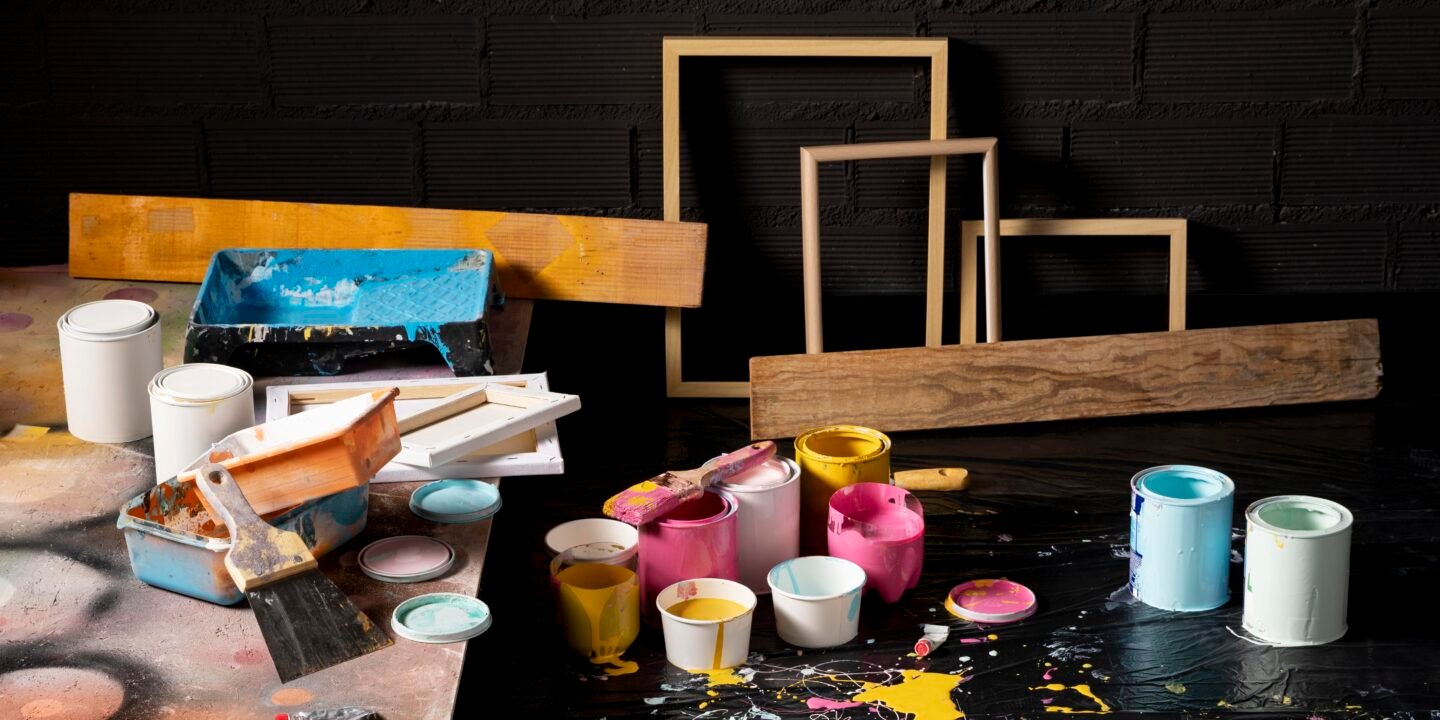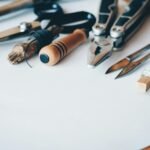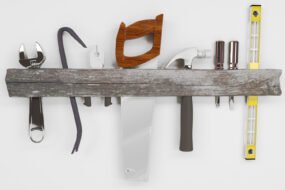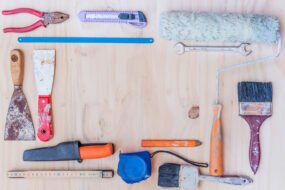
Embarking on DIY projects can be a fulfilling and rewarding experience. Whether you’re looking to spruce up your home, create unique gifts, or engage in fun crafts with your family, having the right tools and materials at your disposal is crucial. In this blog, we’ll explore essential tools and materials that every DIY enthusiast should consider having in their toolkit. From basic hand tools to specialized equipment and versatile materials, this comprehensive guide will prepare you for your next DIY adventure.
1. Essential Hand Tools
1.1. Hammer
The hammer is a fundamental tool in any DIY toolkit. It’s versatile and used for various tasks, from driving nails into wood to removing them.
- Types of Hammers:
- Claw Hammer: Best for driving and removing nails.
- Rubber Mallet: Ideal for tapping without damaging surfaces.
1.2. Screwdrivers
A good set of screwdrivers is indispensable for assembling furniture, fixing appliances, and general repairs.
- Types of Screwdrivers:
- Flathead (or Slotted): Suitable for screws with a single groove.
- Phillips Head: Designed for screws with a cross-shaped groove.
1.3. Pliers
Pliers are handy for gripping, twisting, bending, and cutting wire and other materials.
- Types of Pliers:
- Needle-Nose Pliers: Great for precision tasks and reaching tight spaces.
- Wire Cutters: Specifically designed to cut through wire easily.
1.4. Tape Measure
A tape measure is essential for measuring lengths and ensuring your projects are to scale.
- Tip: Look for a tape measure with both metric and imperial measurements for versatility.
1.5. Level
A level is critical for ensuring that your projects are straight and even.
- Types of Levels:
- Bubble Level: The most common type, useful for hanging pictures and shelves.
- Laser Level: A more advanced tool for larger projects, providing precise measurements over longer distances.
1.6. Utility Knife
A utility knife is versatile and useful for cutting various materials, including cardboard, rope, and more.
- Tip: Always keep extra blades on hand for quick replacements.
1.7. Saw
Depending on your projects, you may need a saw to cut through wood or other materials.
- Types of Saws:
- Hand Saw: Basic tool for cutting wood manually.
- Circular Saw: Ideal for larger projects and quick cuts.
2. Power Tools
2.1. Drill
A drill is one of the most versatile power tools you can own. It’s essential for making holes and driving screws.
- Cordless vs. Corded:
- Cordless Drills: Offer portability and convenience.
- Corded Drills: Typically provide more power for heavy-duty tasks.
2.2. Sander
Sanding is essential for achieving a smooth finish on wood projects.
- Types of Sanders:
- Orbital Sander: Ideal for light sanding and finishing.
- Belt Sander: Great for removing material quickly on larger surfaces.
2.3. Jigsaw
A jigsaw is perfect for making curved and intricate cuts in various materials, including wood and plastic.
- Tip: Use different blades for various materials to achieve the best results.
2.4. Circular Saw
A circular saw is powerful and ideal for cutting large sheets of plywood or lumber.
- Tip: Always use safety goggles and ear protection when operating power tools.
2.5. Router
A router is a specialized tool for hollowing out areas in wood and is great for creating decorative edges.
- Tip: Invest in different bits for various routing tasks.
3. Safety Gear
3.1. Safety Glasses
Protect your eyes from dust, debris, and flying objects while working.
3.2. Dust Mask
Wear a dust mask or respirator when sanding or working with materials that produce dust or fumes.
3.3. Ear Protection
Use ear protection when operating loud power tools to prevent hearing damage.
3.4. Gloves
Choose gloves appropriate for the tasks you are performing. Heavy-duty gloves are great for working with wood, while lighter gloves may be suitable for painting.
4. Versatile Materials
4.1. Wood
Wood is a staple in many DIY projects. Familiarize yourself with different types of wood, such as:
- Plywood: Great for furniture and cabinetry.
- MDF (Medium-Density Fiberboard): Ideal for detailed projects and easy to paint.
- Softwoods (e.g., pine): Easy to work with, great for beginner projects.
4.2. Paint and Stains
Painting and staining can dramatically change the look of a project.
- Types of Paint:
- Latex Paint: Water-based and easy to clean, suitable for walls and furniture.
- Acrylic Paint: Great for crafts and smaller projects.
4.3. Fabrics
Whether for upholstery, curtains, or crafts, fabrics add texture and color to your projects.
- Tip: Consider using fabric remnants for smaller projects or experiments.
4.4. Adhesives
Adhesives are essential for holding materials together.
- Types of Adhesives:
- Wood Glue: Ideal for woodworking projects.
- Super Glue: Great for quick fixes on various materials.
- Hot Glue: Perfect for crafts and temporary holds.
4.5. Hardware
Having a variety of hardware is essential for assembling projects.
- Types of Hardware:
- Nails and Screws: Use appropriate sizes for the materials you’re working with.
- Brackets and Hinges: Useful for furniture and cabinetry.
5. Storage Solutions for Your Tools and Materials
As you build your collection of tools and materials, having an organized storage solution will keep everything in its place and easy to find.
5.1. Tool Chest or Box
Invest in a sturdy tool chest or box to keep your hand tools organized. Look for one with multiple compartments for easy access.
5.2. Pegboard
A pegboard mounted on a wall can be an excellent way to display tools and keep them within reach.
5.3. Clear Bins
Use clear plastic bins to store small materials, such as screws, nails, and craft supplies. Label each bin for easy identification.
5.4. Shelving Units
Install shelving units in your workshop or garage to store larger tools and materials.
6. Getting Started with DIY Projects
Now that you have an understanding of essential tools and materials, it’s time to put them to use! Here are a few beginner-friendly projects to kick off your DIY journey:
6.1. Pallet Coffee Table
Create a rustic coffee table using reclaimed pallets. This project requires basic tools like a saw, drill, and sandpaper.
Materials Needed:
- Two or more wooden pallets
- Sandpaper
- Paint or wood stain
- Wheels (optional for mobility)
Instructions:
- Prepare the Pallets: Sand the pallets to remove any rough edges.
- Stack and Secure: Stack the pallets to your desired height and secure them with screws.
- Finish: Apply paint or stain as desired. If using wheels, attach them to the bottom for easy mobility.
6.2. DIY Bookshelf
Build a simple bookshelf to organize your books and decorative items.
Materials Needed:
- Plywood or MDF
- Wood glue or screws
- Sandpaper
- Paint or stain
Instructions:
- Cut the Boards: Cut the wood to your desired dimensions.
- Assemble: Assemble the shelves using wood glue or screws.
- Finish: Sand and finish with paint or stain.
6.3. Upcycled Mason Jar Organizer
Turn old mason jars into a chic organizer for your workspace.
Materials Needed:
- Mason jars
- Wood board
- Rope or twine
- Screws
Instructions:
- Prepare the Board: Cut the wood board to your desired size and paint or stain it.
- Attach Jars: Securely attach the mason jars to the board using screws and twine for a rustic look.
- Mount: Hang the board on the wall to organize pens, brushes, or kitchen utensils.
7. Conclusion: Embrace Your DIY Journey
With the right tools and materials, anyone can tackle DIY projects and create beautiful, functional items for their home. Remember to start small and gradually build your skill set and tool collection. Don’t be afraid to experiment and make mistakes along the way—every DIY project is a learning opportunity.
As you embark on your DIY journey, keep in mind that creativity, patience, and practice are key. So gather your tools, stock up on materials, and dive into the rewarding world of DIY home improvement and crafting! Your dream projects are just a few steps away. Happy crafting!








